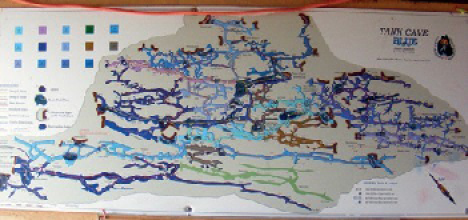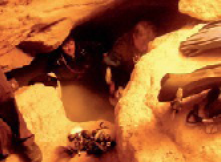
By Chief Superintendent Silvio Amoroso APM, LEM, South Australia Police.
There were successive years of devastating bushfires in South Australia in the mid 2000s, resulting in the loss of life and significant property destruction. As a result, South Australia Police’s Deputy Commissioner Gary Burns decided that a group of Officers of Police at the level of Chief Inspector and Superintendent should be trained in more innovative ways for higher level forward command.
His thinking was to provide South Australia Police (SAPOL) with the capacity to deploy those specially trained officers to any location within the State to take command of major and or protracted incidents. This would be something new.
It would enhance police response in recognition that police leadership and working practical knowledge of command structures and requirements is essential to meet the obligations of the Emergency Management Act. In South Australia, under the Act, police are agency coordinators in addition to managing their own resources as a support or control agency.
So, in March 2008, a new higher-level Police Command Course with 10 participants was developed and conducted. This course focused on leadership and decision making skills transferable into any major incident, including terrorism incidents.
All of the command course participants were already highly trained. They had completed the tertiary level Superintendent Qualification Program, which includes a week long strategic incident management module covering public order, emergency management and counter-terrorism elements of operations command.
As an experienced operational commander I was given the responsibility of the ongoing professional development of the command course participants. My aim was to ensure that the knowledge and skills attained during that course remained sustainable and provided a foundation for present and future improvements in service delivery to the community.
While terrorism was the initial focus of the course, I recognised that the ongoing training should focus on the ability to understand and respond to all categories of major incidents. This included critical environmental events such as bushfires, floods, earthquakes or chemical explosions, which have devastating consequences on public safety.
In this state, bushfires are a very real and significant threat to the safety of numerous communities every summer. As a consequence, the ongoing command course training sessions have had a critical environmental and in particular a bushfire focus. The very same knowledge and skills required by a commander in response to bushfires equally applies to other critical events, such as floods or earthquakes.
When considering the best way to develop the command group and enhance our policing response in an innovative way, I imagined deploying a commander in the field accompanied by a team specifically trained in setting up a Police Forward Command Post (PFCP).
While a Police Commander is well supported in that role in the centrally located Police Operations Centre (POC) through the SAPOL Emergency management Contact List, there is no formalised support for the Police Forward Commander. They often have to rely on local staff to provide the PFCP structure in the field. More often than not, those members have never worked within that environment and are highly likely to have never received any training in their roles and responsibilities as the primary function for responding patrols is for the on-scene management of incidents.
A trained specialised team to operate a PFCP under SAPOL’s Incident Command and Control System (ICCS, essentially a functional approach to the command of any incident), would be the ideal support scenario for any Police Commander.
Ideally, that team would have a high level of operational police experience to allow decision- making at that practical functional level to be knowledgeable and highly motivated, with the flexibility and scope to respond at short notice through the deployment of one of the command group members.
At this point, that ideal team existed only in my head.
Across the state police operations are divided into two large northern and southern regions (Services), each one having a tactical team of 17 members operating under the Command of the Chief Superintendent of that region (Service). The primary objective for these two tactical teams is to enable the flexible deployment of a dedicated group of members to work in collaboration with local police on targeted crime reduction and prevention strategies.
The focus is on high visibility of officers in hot spot areas, to target specific crime issues and criminal activity such as anti-social behaviour, public order offending, property offending, street level drug possession and hoon driving. They adopt a fair but low tolerance attitude and have the flexibility and mobility to deploy anywhere within the State at short notice.
A rigorous selection process ensures that only highly motivated, experienced and above average performers become members of the tactical teams.
It was clear to me that both these groups already possessed the qualities and structure to provide support to a police forward commander establishing a PFCP and hence the concept of PERT or Police Emergency Response Teams was born.
Detailed discussions were then held between both tactical teams and Police Commanders on operational details such as method of deployment and the roles and functions within the PFCP, particularly decision making processes and levels of responsibility.
Agreement for the concept was unanimous and things began to move quickly to establish PERT Teams as a priority.
A business model was developed and as deployment could potentially be metropolitan, regional, rural or remote, there was a need to engage technology that had the ability to ‘plug’ into the various SAPOL systems from anywhere in South Australia. In particular, the ability to use the Critical Incident Management System (CIMS) in real time to allow detailed recording and any police officer with the appropriate authority to access details of the incident from their office, using their desk top computer. This was important as it avoided the need to provide time consuming ongoing verbal updates.
PERT and the Command Group was a new idea, outside of the established SAPOL Emergency management Contact List and the formally established training framework. However, the value of the concept in the effective management of emergency incidents was immediately recognised and supported by police executive and the necessary IT and resourcing requirements for PERT were provided.
Most emergency personnel reading this article will be aware that there has been a tendancy in the past in pursuit of IT remedies for operational requirements to specify the IT needs to the experts. This often results in protracted dialogue and frustration with the delivery of IT solutions not doing what was anticipated. To avoid that situation on this occasion, I met with IT management, provided them an understanding of the role and the expected outcomes of PERT, and left them to determine what technology could best be deployed to meet those requirements.
The results were quick, simple, cost effective and stunningly operationally efficient when deployed in the field. It enabled links into SAPOL systems literally from the middle of a paddock in country South Australia.
The technology consists of a small portable router with NextG application for connections into SAPOL mainframe. This enables use of the technology from nearly every part of the State and at the very minimum; coverage is assured at all locations in this State with a population base regardless of its size.
PERT has now been very successfully deployed in metropolitan and regional locations earning high praise from the Police Forward Commanders for providing them with professional, effective and highly efficient support. The concept is flexible, being used for both emergency and major crime incidents with its IT linkages and real time documentation and recording of all activities, including the decision making processes by the PFC.
As a result additional equipment has been purchased including a smart board and interactive mapping system to enhance the capabilities and functions for the Police Forward Commander. Importantly, care was required in not overburdening PERT with equipment, as the essential criteria are flexibility and mobility to respond quickly to any location within the State either by road or plane.
The PERT model provides a simple, rapid, cost effective and operationally efficient response to managing any major community safety incident across a wide range of locations.
A case study example that attracted national and international media coverage was the recovery of a missing diver who died whilst exploring the famous Tank Cave near Mount Gambier in the south east region of South Australia.
On Sunday 27 February 2011, members of the Cave Divers Association of Australia (CDAA) reported that one of their well-known and experienced female members was missing within the well-known ‘Tank Cave’, after failing to surface from a dive.

Tank Cave is world renowned for its 7 kilometres of complex channels and chambers with many restriction points located within the cave system. Diving in this location is an extremely dangerous and technically demanding experience.

Entry to the caves is through a small hole in the ground, leading down a vertical chamber.
The recovery of the missing diver’s body was extremely dangerous and expected to take some 5 days to accomplish in what was literally a paddock in the middle of farmland and pine forests in regional South Australia.
Members of the CDAA were given the task of recovering the body under the supervision and coordination of SAPOL. This required the establishment of a Police Forward Command Post to ensure the safety and coordination of civilians and other emergency services. The risk associated with the recovery required a professional approach with a high level of accuracy and recording of all operational details including briefings and directions.
The southern region (Service) PERT Team was immediately deployed along with an Officer from the Command Group to the scene, providing a high level of support and reassurance to all those involved. This included local police, also responsible for other daily response requirements and those close to the missing diver such as the Cave Divers Association of Australia members attempting the recovery operation, and the parents of the victim who remained at the scene for a number of days. There was also a high level of media interest.
Police management of this incident required both sensitivity and tact and a high level of awareness and coordination of appropriate safety procedures. The cave environment and surrounding terrain was unforgiving and the specialised operational knowledge and technical IT support from the PERT team was invaluable in ensuring no further harm was caused to any rescuer or investigator. The PERT structure was also able to easily provide coronial investigators with all appropriate recording and documentation requirements.

The Tank Cave environment and surrounding terrain was unforgiving and the specialised operational knowledge and technical IT support from the PERT team was invaluable in ensuring no further harm was caused to any rescuer or investigator.
Silvio Amoroso APM, LEM is Chief Superintendant of the South Operations Service of the South Australia Police in Bedford Park, South Australia.